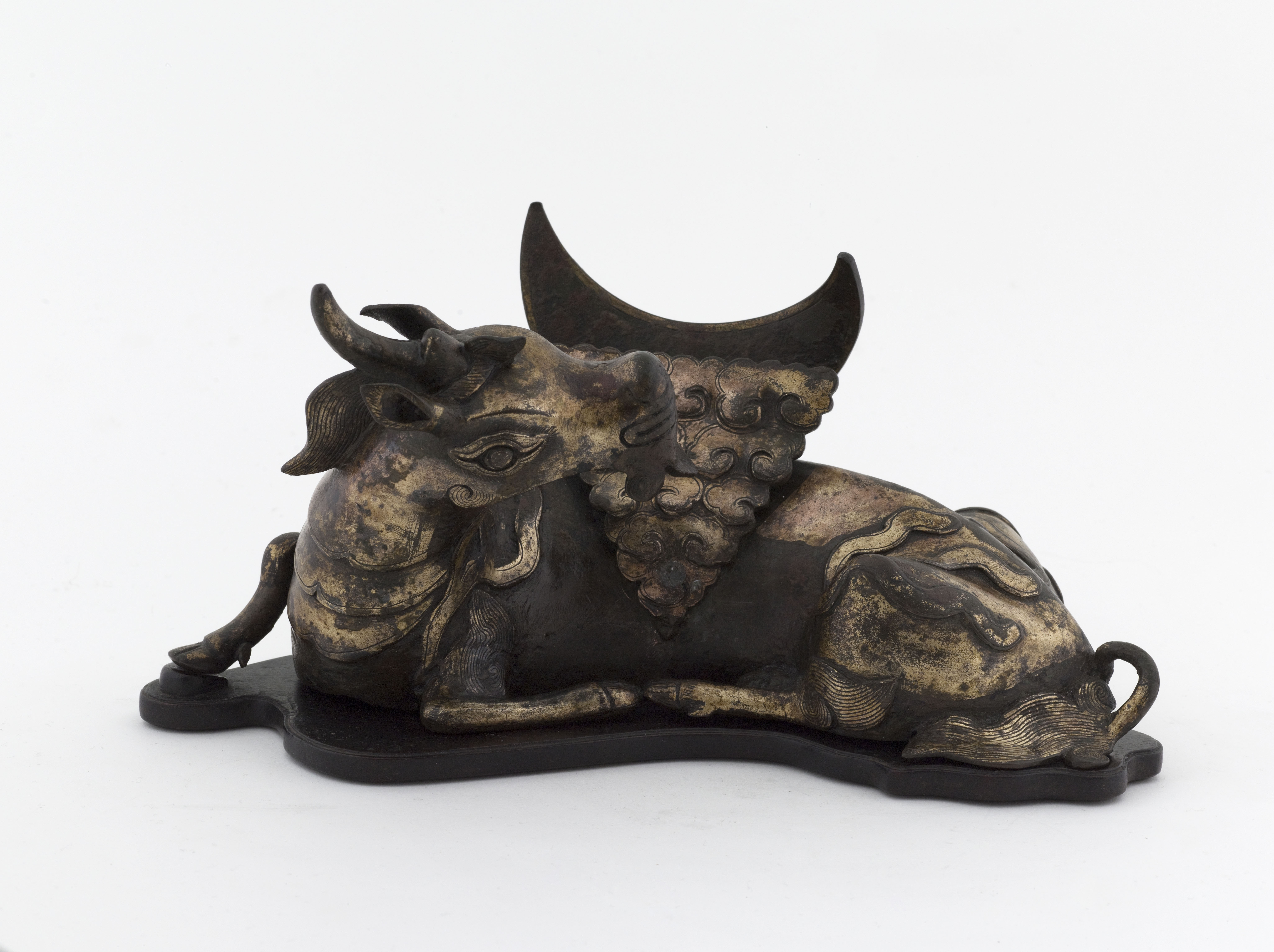
Porte-miroir (jingjia 鏡架) en forme de rhinocéros
Objet de toilette, Miroir, Statuette
Legs : Cernuschi, Henri
M.C. 947
The animal on this mirror stand, carved in the round and carrying a crescent moon, is the incarnation of a rhinoceros (xiniu 犀牛), the model for certain zoomorphic vessels of Chinese antiquity. A xiniu motif on an island or sand bank, contemplating the moon, adorns mirrors from the 12th to 14th centuries; it is a variant of the theme of the ox of the South gazing at the moon. The moon is represented here by a crescent emerging above stylised clouds; a round mirror set in the crescent represented the full moon. A Song mirror with the same design was found in a tomb dating from the Hongwu period 洪武 (1328-1398).
Since a similar object (Victoria and Albert Museum, London) featured on the cover of a book by Rose Kerr, almost all mirror stands of this type have been traditionally dated to the Yuan period. The flat eye, surrounded by a thick eyelid, is barely visible: it is reminiscent of certain figures along the Spirit Way of the Ming tombs in Nanjing; however, the eyes surrounded by something resembling eyelashes appear on certain animal figures of the second half of the 15th century. While the iconography endured beyond, as shown by another mirror stand, the xiniu would often be replaced, from the 16th century, by the qilin 麒麟, a scaly four-legged creature with a dragon’s head.
Kerr, Rose, Later Chinese Bronzes, Londres : Bamboo Publishing – Victoria and Albert Museum, Far Eastern Series, 1990.